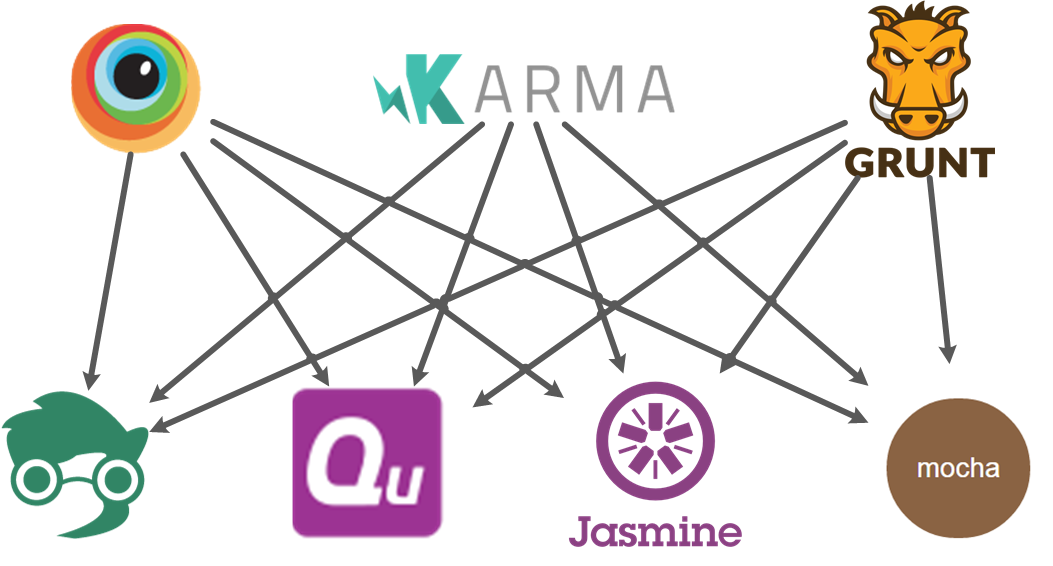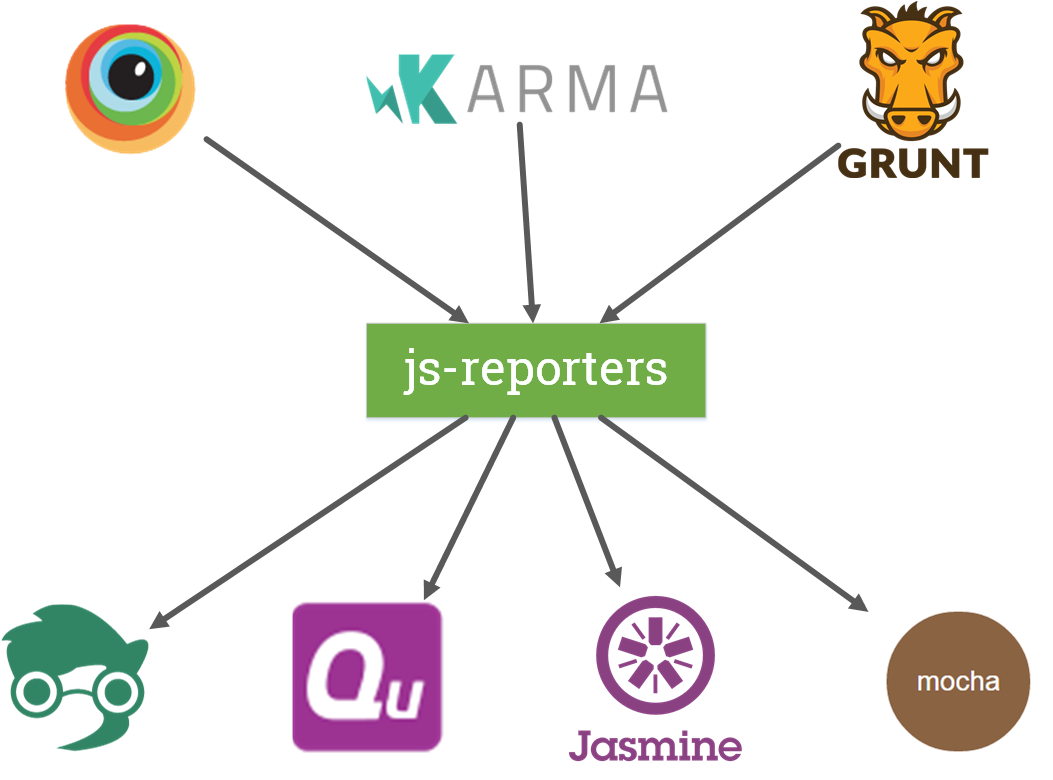The Common Reporter Interface (CRI) for JavaScript Unit Testing Frameworks
| Avoid this: | Do this: |
|---|---|
 |
 |
https://github.com/js-reporters/js-reporters/issues/
We on the QUnit team have been discussing the possibility of working with other JS test frameworks, especially those that can be run client-side (e.g. Mocha, Jasmine, Intern, Buster, etc.), to agree upon a "Common Reporter Interface" so that we could hopefully share Reporter plugins between testing frameworks. This would also benefit high-level consumers of the frameworks such as Karma, BrowserStack, SauceLabs, Testling, etc.
This would most likely come in the form of:
- a common Reporter API/Interface, e.g.
- an EventEmitter interface (
.on(...)/.off(...)) OR an object with standard "hook" properties - maybe a standard-ish way to register a Reporter, e.g.
MyLib.addReporter(x),MyLib.reporter = x;, etc.
- an EventEmitter interface (
- a minimum viable set of standardly-named events
- an associated standard set of data/details provided for each event
- a minimum viable set of standard test status types (e.g. pass, fail, skip, todo, pending, etc.)
- updating all participating test frameworks to support this new common Reporter interface
Would you be interested in discussing this with us further? Please join in!
Based on the discussion in #1, this is the suggested minimum set of event names to be triggered by a testing framework, to be consumed by reporters or other testing tools.
runStart: Indicates the beginning of a testsuite, triggered just once.suiteStart: Triggered at the start of each group of tests within a testsuite.testStart: Triggered at the start of each test.testEnd: Triggered at the end of each test.suiteEnd: Triggered at the end of each group of tests within a testsuite.runEnd: Indicates the end of a testsuite, triggered just once.
The criteria for picking these event names included:
- These use the most common terms across a selection of frameworks, as gathered in #1
- It uses names that are valid JavaScript identifiers, which allows using those as keys in JSON and avoids the need to quote keys in regular JS objects or function calls.
- It doesn't overlap with any known existing events, so introducing these could be done in parallel to the existing API in each framework, optionally deprecating and eventually removing the previous API.
Based on the discussion in #12, there are two basic data structures: Suites and Tests. A test represents an atomic test/spec/it(). A suite contains tests and optionally other suites. This can represent both flat structures like used by QUnit as well as nested suites like used by Jasmine or Mocha. The data structures are defined as follows:
- Test: A test holds basic information on a single test/spec. It has the following set of required attributes:
testName: name of the testsuiteName: name of the suite the test belongs tostatus: result of the test. Canpassed,failedorskipped. A skipped test is disabled, i.e. it will not be executed.runtime: execution time in millisecondserrors: array containing all errors. Depending on the framework, this is a single exception or a list of failed assertions. Will be empty for statuses other than failed.
- Suite: A suite is a collection of tests and potentially other suites.
name: name of the suitechildSuites: array with all direct subsuitestests: array containing all tests that directly belong to the suite (but not to a child suite)runtime: execution time of the whole suite in milliseconds (including child suites)status: summarized status of the suitefailed, if at least one test failedskipped, if all tests in the suite are skipped (and there is at least one skipped test)passed, if there is at least one passed test and all other tests are skipped or if there are no tests in the suite.
For testStart and testEnd, the corresponding test object is passed to the reporter. The same applies to suiteStart and suiteEnd where the matching suite object is passed to the reporter. For runStart and runEnd a "global" suite object is passed to the reporter, which contains all top-level suites as child suites.
When runStart, suiteStart and testStart are emitted, the status, runtime and errors attributes are undefined.